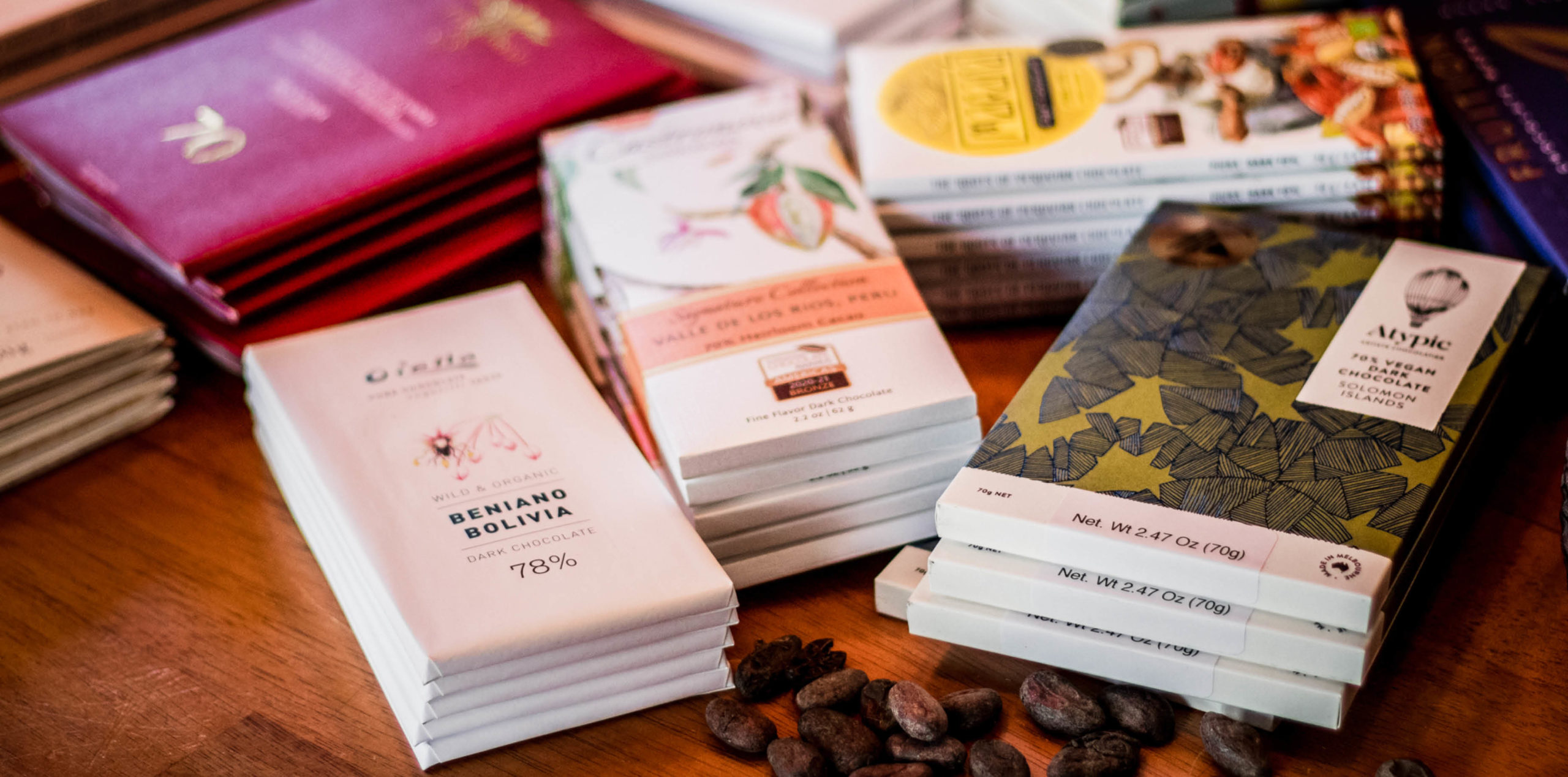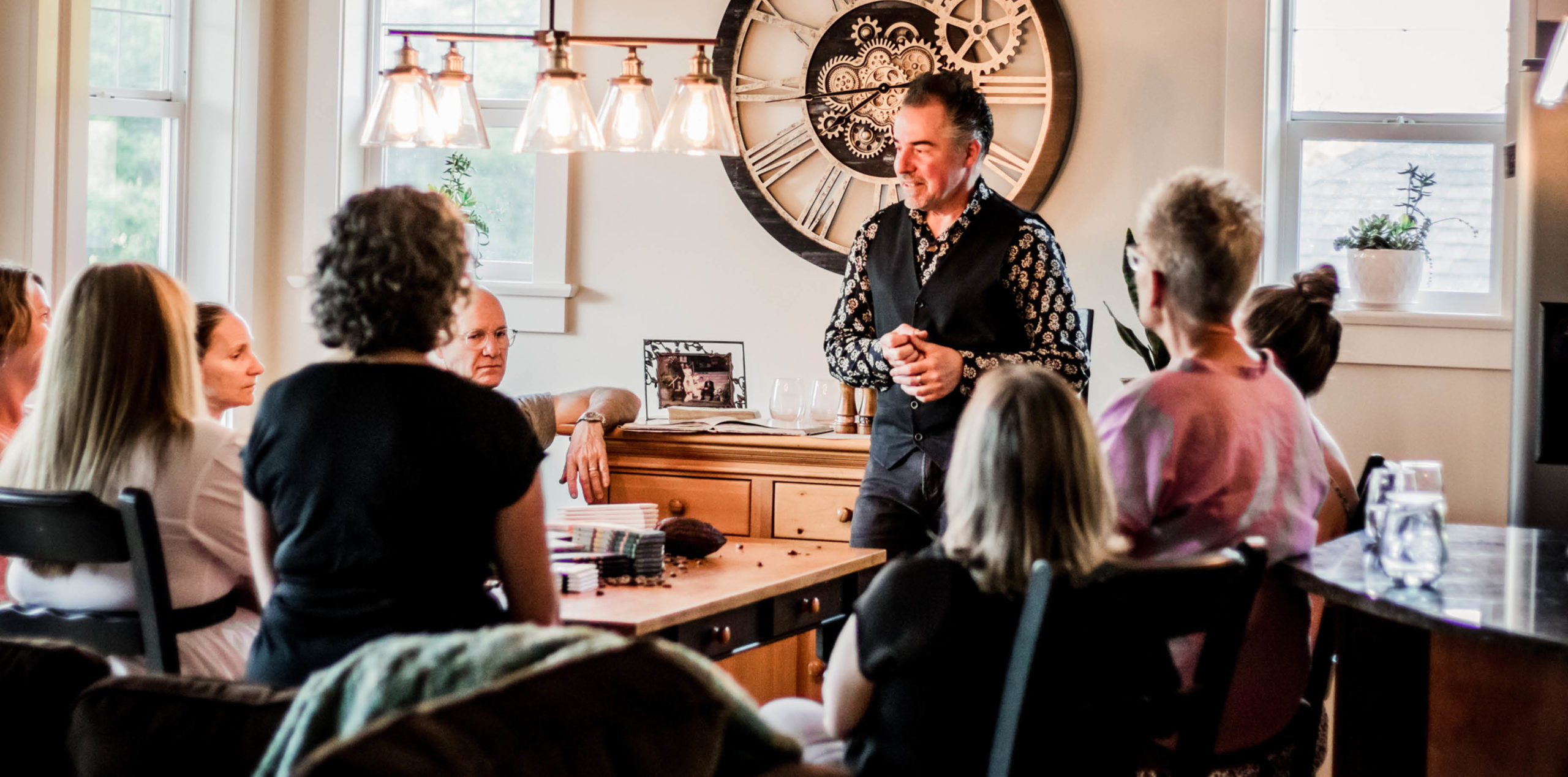by Stephanie Staples | photos by Amanda Cribdon Photography –
Imagine if people sent you chocolate from all over the world for you to taste and give your expert opinion on?
It’s a real thing!
For years, every time I visited the Victoria Public Market, I was very explicably drawn to The Chocolate Project – a quaint store containing hundreds of beautifully packaged chocolate bars from around the globe.
Time after time, I would chat with the owner, David Mincey, learn something new about chocolate and treat myself to a unique bar.
When I found out he provided Tasting Parties I knew this would be a great “Day Out!”
As you can imagine, it wasn’t hard to convince Seaside Magazine columnists, staff and photographers to gather for an evening of chocolate education and tasting. David was happy to oblige and assured me: “This will be epic; guaranteed to change a few lives.” It seemed a rather big promise for a night of chocolate tasting, but did he ever deliver!
With thanks to our hosts Janis and Mike Jean (you will recognize her name from so many of the fabulous photos in Seaside) we gathered around their kitchen table, armed with just a glass of water and an open mind, as instructed.
David had created a lovely display of some of his favourite ethically sourced, traceable and sustainably farmed bars, complete with cacao beans for both decoration and learning. This was likely no easy task for him as he has at his disposal over 300 of the world’s finest single origin chocolate bars to choose from!
We were anxious to taste of course, but we didn’t know what we were in store for as David took us on a chocolate roller coaster ride of emotion. Happiness (chocolate is a fruit), sadness (industrial chocolate is produced by slave labour), intrigue (did you taste the hint of smoke in that piece?), surprise (there are no added flavours to these incredible tasty bars), shock (of all the foods we eat, chocolate is the least ethical food produced).
David unapologetically shared the good, bad and ugly of the underground chocolate world as well as information about cacao history, economics and distribution of these bean-to-bar delights.
We learned that all these years, we have been eating “slave chocolate” – unethically sourced chocolate. In fact, David used the word “candy” for those products: because of all the additives there is actually very little pure cacao in our typical chocolate.
We also learned that all these years we have been eating chocolate “wrong” – apparently gobbling up a Kit Kat does not count as chocolate tasting!
Think of a chocolate tasting party more as you would a wine, cheese or coffee tasting event. A plate is passed around with an unnamed broken-up bar; you choose a square and place it on your tongue and for heaven’s sake don’t let it touch your teeth!
Apparently, good chocolate is best enjoyed in a liquid form so the idea is to press it to the roof of your mouth, and let it sit there; maybe tickle it with your tongue to help it melt. In the next minute or two you will start to notice the range of flavours in your mouth, which is actually amazing since, as I mentioned, there are no flavour additives in the chocolate. All of its complex taste comes from careful harvesting, fermentation, drying and roasting. Incredible!
Now, if I could commit to only eating pure chocolate like this and could have the willpower to take 90 seconds to enjoy each square, I have calculated that I would save over 182,000 calories per year!
In all seriousness, The Chocolate Project is more than just a store and the Tasting Party is more than just an event: it’s an important movement that is taking small steps to make the world a better place, and who wouldn’t want to support that!
To book your own event for up to 20 people, reach out to David at info@chocolateproject.ca – you will be the hero! As Seaside’s “Screen Scene” columnist Tabatha Golat said: “It’s a great way to support a local business that is making huge strides to improve the lives of cocoa bean farmers and chocolate makers around the globe, while also providing important education about the way we consume our products in the Western world.”





